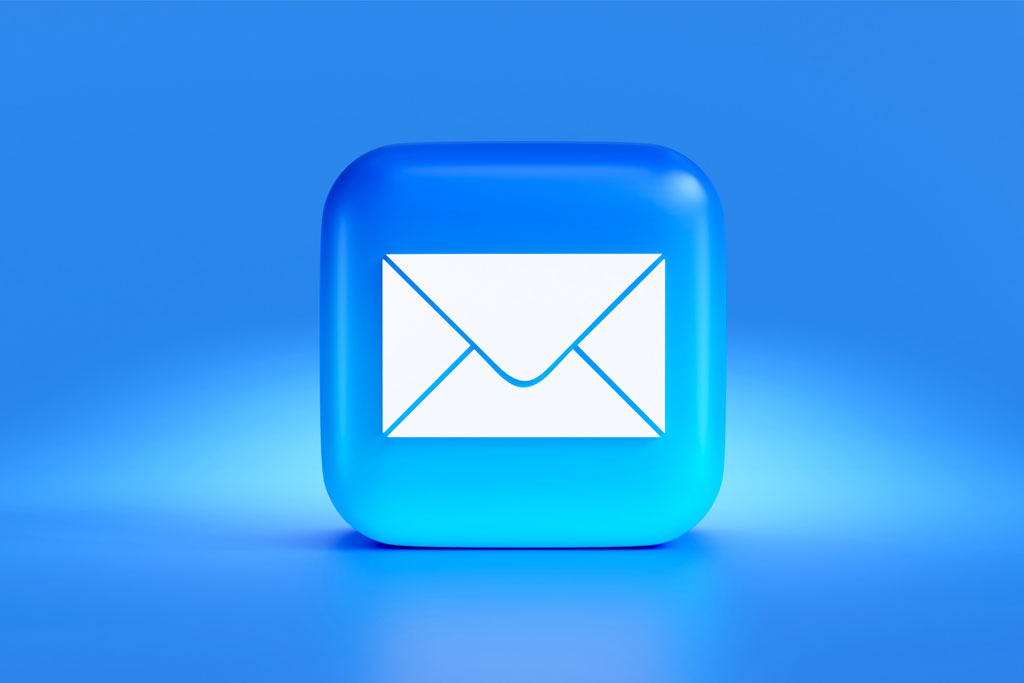Why Messaging and Chat Will Take Over Email
The way we communicate has evolved significantly over the years, from handwritten letters and phone calls, to emails, and now text messages, chat, and video calls. With the advent of messaging and chat applications, it’s clear that a new revolution in communication is upon us. In this blog, we will explore why messaging is poised to take over email as the primary mode of digital communication. We’ll discuss the benefits of messaging and chat, as well as the problems associated with legacy email systems.
Why Messaging is Better than Email
Real-time Communication
One of the most significant advantages of messaging and chat over email is the real-time nature of the communication. Unlike email, where messages are typically delivered and received with some delay, messaging allows for instant back-and-forth conversations. This real-time aspect is particularly valuable for individuals, where quick interactions are more free flowing.
Conversational Nature
Instant messaging platforms are designed for conversations, which makes them inherently more engaging and interactive than email. In a messaging environment, you can see when your contacts are typing, read receipts indicate when messages have been seen, and emojis and stickers add a personal touch to conversations. These features make communication more dynamic and efficient with messaging and chat.
Multimedia Support
Messaging and chat applications excel in supporting multimedia content. Users can easily share images, videos, audio clips, documents, and links within the conversation, eliminating the need for clunky email attachments. This multimedia support enhances the richness of communication and makes it easier to convey complex information.
Instant Feedback and Collaboration
Messaging applications enable instant feedback and collaboration, making them ideal for scenarios where quick responses are crucial. For example, in a team working on a time-sensitive project, real-time messaging can help address questions, provide updates, and make critical decisions on the spot in team chats. This instant collaboration ensures that everyone is on the same page and can contribute effectively.
Group Chats and Channels
Messaging apps excel in group communication. You can create group chats or channels to bring together multiple people including friends, family members, team members, or departments. These spaces foster teamwork by enabling everyone to discuss matters collectively, share files, and stay updated on developments. In contrast, email group conversations can become convoluted and disorganized, making it harder to follow the discussion.
Rich Media Sharing
Messaging apps provide seamless support for sharing multimedia content. You can send images, videos, audio clips, giphys, and documents with ease during in-app chat. This is especially valuable when conveying information that is better illustrated through visuals. For instance, a marketing team can quickly share graphics, infographics, and videos to brainstorm and execute creative campaigns.
Reduced Email Clutter
Email inboxes often become cluttered with newsletters, spam, and non-essential messages. In a business context, this clutter can lead to important emails being lost in the noise. Messaging apps focus on keeping your conversations organized, helping you declutter your digital workspace and ensuring you don’t miss critical updates or discussions.
Simplified Information Retrieval
When you need to find specific information in an email, it can be a daunting task to search through your inbox. Messaging apps, on the other hand, offer more straightforward and efficient search functionality. You can quickly locate past conversations, messages, and shared files, allowing you to retrieve the information you need without sifting through a sea of unrelated emails.
Emojis and Reaction Features:
Messaging apps add a layer of expressiveness to conversations with emojis and reaction features. These can convey emotions and responses more vividly than text alone. In contrast, email often feels more formal and less expressive, making it less suitable for conveying the subtleties of tone and sentiment in a discussion.
Notifications and Alerts
Messaging apps offer customizable notifications, allowing you to stay informed without being overwhelmed. You can choose to receive alerts, and push notifications for specific conversations or keywords, ensuring that you’re alerted to critical updates while reducing distractions. Email notifications can be more challenging to manage, often leading to a constant barrage of alerts.
Interactive Features
Messaging apps frequently incorporate interactive features, such as polls, surveys, and chatbots. These features streamline decision-making and automate routine tasks. For example, a project manager can use a messaging app to create a poll to gauge team preferences, simplifying the decision-making process.
The Benefits of Messaging and Chat
Improved Productivity
One of the key differences of messaging is that it can boost productivity by facilitating quicker communication and reducing the time spent on managing email inboxes. Conversations are easy to search and organize, ensuring that important information is readily accessible. Plus, features like chatbots can automate repetitive tasks, leaving employees with more time for meaningful work.
Enhanced Collaboration
Messaging apps offer collaborative features like group chats, channels, and file sharing. These tools are indispensable for teamwork, enabling team members to collaborate in real time, regardless of their physical location. This improved collaboration fosters creativity and innovation in the workplace.
Better Mobile Experience
In today’s fast-paced world, the mobile device has become an integral communication platform. Messaging apps are mobile-friendly, providing a more convenient and efficient experience for active users, and busy people on the go. Email applications on mobile devices can be clunky, and they often lack the same real-time interaction and integration found in messaging apps.
Cost-Effective Communication
Many messaging apps offer free or low-cost communication options, reducing the need for expensive email solutions and services. This cost-effectiveness is especially attractive for small businesses and startups, allowing them to allocate their resources more efficiently.
Enhanced Security
While email has been plagued by security concerns, the most secure messaging apps often come with robust security features. End-to-end encryption, two-factor authentication, and user authentication protocols make messaging a more secure communication. As a result, sensitive information is less likely to be exposed to cyber threats, and keep private messages as they should be…private.
The Top 20 Problems with Email
- Email Overload: Email inboxes often become inundated with a high volume of messages, including spam, newsletters, promotional emails, and work-related correspondence. This overload can make it challenging to find and prioritize important messages.
- Inefficient Organization: Emails can be challenging to organize effectively. Users often rely on folders and labels to categorize messages, which can lead to confusion and lost messages, particularly if the organization structure is not well-maintained.
- Lack of Context: Email exchanges can be disjointed, lacking the contextual flow of a conversation. It can be difficult to follow the thread of a discussion or understand the context behind specific messages, especially when multiple individuals are involved.
- Vulnerability to Phishing and Spam: Despite advances in email filtering and security, phishing emails and spam can still infiltrate inboxes. This poses a risk to users who may inadvertently click on malicious links or divulge sensitive information.
- Attachments and File Sharing Issues: Email attachments can be limited in size, leading to difficulties when sharing large files. Additionally, downloading and opening attachments can take a long time, and the risk of viruses or malware associated with attachments remains a concern.
- Delayed Communication: Email communication is inherently asynchronous, meaning there can be delays in response times. This may not be suitable for situations that require real-time interaction or quick decision-making.
- Ineffective Spam Filters: While spam filters have improved, they are not foolproof. Sometimes legitimate emails end up in spam folders, which can lead to important messages being missed.
- Inbox Clutter: Users often struggle with an overcrowded inbox, making it difficult to locate critical emails, causing important information to be buried within the clutter.
- Formatting and Display Issues: Emails can display differently on various email clients and devices, leading to issues with formatting, images, and attachments. This can result in a less consistent and reliable communication experience.
- Email Brevity and Tone Misunderstanding: Emails tend to be brief and to the point, which can sometimes lead to misunderstandings or misinterpretations of tone. Without visual or auditory cues, sarcasm or humor can be misread.
- Limited Search Functionality: Email search functionality can be limited, making it challenging to find past messages, especially when dealing with a large email archive.
- Email Server Downtime: Email servers can experience downtime, leading to interruptions in communication. This can be particularly problematic for businesses relying on email for critical operations.
- Complex Spam Reporting: Reporting spam emails can be a cumbersome process, requiring users to manually report issues or mark emails as spam.
- Lack of Collaboration Tools: Email is primarily designed for one-on-one communication and lacks built-in collaborative features found in modern messaging and chat apps, such as group chats, document collaboration, and shared task lists.
- Poor Mobile Experience: Email clients on mobile devices can be clunky and less intuitive than dedicated messaging apps. This can lead to a less convenient experience for users who are frequently on the move.
- Data Storage and Archiving Challenges: Storing and archiving emails for compliance or record-keeping purposes can be complex and resource-intensive.
- No Read Receipts: While some email clients support read receipts, they are not universally adopted, making it difficult to confirm if the intended recipient has seen your message.
- Less Personal Interaction: Email is often perceived as a more formal conversation and less personal means of communication compared to the dynamic and expressive nature of messaging and chat apps.
- Attachment and Document Version Confusion: Multiple iterations of an attachment can be sent via email, causing confusion over which version is the most recent, leading to potential errors and inefficiencies.
- Email Address Dependency: Email often relies on email addresses, which can change or be forgotten, making it challenging to maintain contact with individuals who may have changed their email address.
Final Thoughts
As the digital landscape continues to evolve, it’s becoming clear that messaging and chat applications are poised to take over email as the primary mode of communication. The benefits of messaging, such as real-time communication, improved team productivity, and enhanced collaboration, far outweigh the problems associated with legacy email systems.
Messaging apps are designed for the way we communicate in the modern world, prioritizing convenience, security, and seamless integration. Whether you’re a business looking to improve your team’s efficiency or an individual seeking a more streamlined and engaging communication experience, the future lies in messaging and chat.
While email will likely always have a place in our digital communication toolkit, it’s clear that messaging is the way forward, offering a more dynamic and efficient means of connecting with others in a rapidly evolving digital landscape. So, embrace the messaging revolution and stay ahead of the curve in the world of communication.
Photo by Mariia Shalabaieva on Unsplash


